Having the right camera is crucial for capturing beautiful and memorable moments in wedding photography. A wedding is a once-in-a-lifetime event, and the photos taken on that day will be cherished for years to come. The right camera can make all the difference in capturing the essence of the wedding, the emotions of the couple and their guests, and the beauty of the venue.
In this article, we will focus on the best Canon camera for wedding photography. Canon is one of the most popular camera brands among professional photographers, and their cameras are known for their excellent image quality, versatility, and reliability.
We will explore some of the best Canon cameras for wedding photography and discuss their features, pros, and cons to help you choose the right one for your needs. Whether you are a professional wedding photographer or an amateur looking to capture stunning wedding photos, this article will provide valuable insights into the best Canon cameras for wedding photography.

Photo by Pixabay
Factors to consider when choosing a camera for wedding photography
The wedding event usually involves a ceremony where the couple exchanges vow and rings, followed by a reception where family and friends gather to celebrate the newlyweds.
The location of a wedding can vary. Some couples prefer to have their wedding at a religious institution, such as a church, temple, or mosque. Others opt for an outdoor wedding, such as on a beach, in a garden, or at a vineyard. Indoor venues, such as hotels, banquet halls, or event spaces, are also popular options for wedding receptions.
The timing of a wedding can also vary, as cultural traditions, and availability of the venue. Generally, weddings are held during day time or at night.
Therefore choosing a camera for wedding photography can be a challenging job, there are several factors to consider to ensure that you get the best camera that suits shooting at different locations and timing. Some of the factors to consider include:
-
Image quality:
The image quality of a camera is perhaps the most critical factor to consider when choosing a camera for wedding photography. You want a camera that can produce high-quality images with excellent resolution, color accuracy, and dynamic range. There are two camera features that define the image quality:
-
Sensor size:
The sensor size determines how much light the camera can capture and how much detail it can resolve. A larger sensor usually means better image quality, especially in low-light situations.
However, a larger sensor also means a larger and heavier camera body and lenses. Canon offers both full-frame and APS-C sensors in its cameras. Full-frame sensors are preferred by many professional wedding photographers because they offer more depth of field control, better dynamic range, and lower noise levels than APS-C sensors.
Also, APS-C sensors are cheaper and more compact than full-frame sensors, making them ideal for beginners or backup cameras.
-
Resolution:
The resolution refers to how many pixels the sensor has. A higher resolution means more detail and sharpness in the images, but also more storage space and processing power are required. A higher resolution also allows more cropping flexibility in post-production. Canon offers cameras with resolutions ranging from 18 megapixels (MP) to 45 MP.
The optimal resolution for wedding photography depends on your personal preference and output needs. If you plan to print large prints or crop heavily, you might want a higher-resolution camera like the Canon EOS R5 (45 MP). If you mainly deliver digital files or print small prints, you might be fine with a lower-resolution camera like the Canon EOS R6 (20 MP).

Photo by Depositphotos
-
Low-light performance:
Wedding photography often takes place in low-light situations, such as indoor venues or outdoor receptions at night. Therefore, it is crucial to choose a camera that has excellent low-light performance and can produce high-quality images in challenging lighting conditions.
A camera with good low-light performance should have a few key characteristics, such as:
-
- A large sensor size that can collect more light and produce less noise
- A high ISO range that can boost the sensitivity of the sensor without compromising image quality
- A fast lens aperture that can let in more light and create a shallow depth of field
- An effective image stabilization system that can reduce camera shake and blur
- A reliable autofocus system that can lock on to subjects quickly and accurately
-
Autofocus system:
A fast and accurate autofocus system is essential for capturing sharp and well-focused images, particularly when shooting moving subjects like people dancing or walking down the aisle. A good autofocus system should have many focus points across the frame, fast tracking speed, reliable face detection and eye detection features, and low-light sensitivity.
Canon has improved its autofocus system significantly in recent years with its Dual Pixel CMOS AF technology that uses phase-detection pixels on the sensor itself to achieve fast and accurate focus in both stills and video modes.

Photo by Depositphotos
-
Shooting speed:
Weddings can be fast-paced, and you don’t want to miss any critical moments. Therefore, it’s essential to choose a camera with a fast shooting speed and a buffer that can handle continuous shooting for extended periods.
The speed refers to how fast the camera can shoot continuous frames per second (fps). A faster fps means more chances of capturing decisive moments or expressions during a wedding ceremony or reception. However, faster fps also means more buffer time and storage space required.
-
Video features:
Video is becoming more important for wedding photography as many clients expect their photographers to deliver both stills and video footage of their special day.
A good video camera should have high-resolution options, smooth frame rates, good autofocus performance, and advanced features like log profiles or stabilization.
-
Durability and reliability:
A wedding is a once-in-a-lifetime event, and there are no second chances to capture the perfect shot. Therefore, it’s essential to choose a camera that is durable, reliable, and can withstand the rigors of a long wedding day.
-
Lens selection:
modern cameras use interchangeable lenses, and it’s crucial to choose a camera that is compatible with a wide range of lenses, including fast prime lenses for low-light situations, zoom lenses for flexibility, and telephoto lenses for capturing distant subjects.
By considering these factors, you can choose the best Canon camera for wedding photography that will meet your needs and help you capture stunning images on that special day.

Photo by Min An
Best Canon cameras for wedding photography
Here are our recommended Canon cameras, the list is classified according to the photographer’s skill level:
For Beginner photographers:
For Intermediate photographers:
For Advanced photographers:
For Beginner photographers:
For beginners, Canon offers several good options for shooting wedding photography. These cameras are affordable and provide the necessary features for shooting wedding photography.
The Canon EOS Rebel T7i is an excellent entry-level DSLR camera for beginners. It features a 24.2-megapixel APS-C sensor, which provides good image quality in a variety of lighting conditions. The camera also has a fast and accurate autofocus system, which is essential for capturing sharp images of moving subjects.
Additionally, the Rebel T7i has a vari-angle touchscreen LCD, which makes it easy to compose shots from different angles.
The Canon EOS Rebel T7i is a popular entry-level DSLR camera that offers a range of features for amateur photographers. Here are some of the pros and cons of this camera:
Pros:
- Excellent image quality: The T7i features a 24.2-megapixel sensor and the latest DIGIC 8 processor, which deliver excellent image quality with great color accuracy and sharpness.
- Fast autofocus: The camera’s Dual Pixel CMOS AF system provides fast and accurate autofocus, which is particularly useful for shooting in low light conditions or capturing moving subjects.
- User-friendly interface: The T7i has a simple and intuitive interface, making it easy for beginners to operate the camera and access its features.
- Good battery life: The camera’s battery can last up to 600 shots per charge, which is impressive for an entry-level DSLR.
- Vari-angle touchscreen: The T7i features a 3-inch vari-angle touchscreen display, which is useful for shooting from different angles and accessing the camera’s menus and settings.
Cons:
- Limited burst mode: The T7i’s burst mode is limited to only 6 frames per second, which may not be sufficient for capturing fast-moving action.
- No 4K video: The T7i can only record video in Full HD 1080p, which may not be suitable for those who want to shoot in 4K.
- No headphone jack: The camera does not have a headphone jack, which can be a limitation for those who want to monitor audio while recording video.
- Limited dynamic range: The T7i’s dynamic range is not as wide as some other cameras in its class, which can result in a loss of detail in highlights and shadows in high-contrast scenes.
- No weather sealing: The camera is not weather-sealed, which means it may not be suitable for shooting in harsh weather conditions.
The Canon EOS M50 is a mirrorless camera that is ideal for beginners who want a lightweight and compact camera for shooting weddings. It features a 24.1-megapixel APS-C sensor, which provides good image quality and low-light performance.
The camera also has a fast and accurate autofocus system, as well as a vari-angle touchscreen LCD for easy composition. Additionally, the M50 has built-in Wi-Fi and Bluetooth connectivity, which makes it easy to transfer photos to a smartphone or tablet for quick sharing.
The Canon EOS M50 Mark II is a mirrorless camera that offers a range of features for photographers and videographers. Here are some of the pros and cons of this camera:
Pros:
- Good image quality: The M50 Mark II features a 24.1-megapixel APS-C sensor and DIGIC 8 processor, which deliver good image quality with excellent color reproduction and detail.
- Dual Pixel CMOS AF: The camera’s Dual Pixel CMOS AF system provides fast and accurate autofocus, making it easy to track moving subjects and shoot in low light conditions.
- Vari-angle touchscreen: The M50 Mark II features a 3-inch vari-angle touchscreen display that can be tilted to different angles, making it easy to shoot from different angles and access the camera’s menus and settings.
- Good video capabilities: The camera can record 4K video at 24p and Full HD video at 60p, and features a microphone input and a clean HDMI output, which is useful for videographers.
- Compact and lightweight: The camera is small and lightweight, making it easy to carry around and use for extended periods of time.
Cons:
- Limited battery life: The M50 Mark II’s battery life is rated at around 305 shots per charge, which may not be sufficient for longer shoots.
- Limited buffer depth: The camera’s buffer depth is limited to only 10 RAW files, which may be a limitation for photographers who shoot in continuous burst mode.
- No in-body image stabilization: The M50 Mark II does not have in-body image stabilization, which means that stabilization has to be done through the lens or with an external gimbal.
- Limited lens selection: Canon’s mirrorless lens lineup is not as extensive as its DSLR lens lineup, which may limit the range of lenses available for the M50 Mark II.
- Limited customization: The camera does not offer as much customization as some other cameras in its class, which may be a limitation for more advanced users.
It boasts a 24.2MP APS-C sensor, 4K shooting capability, and a burst rate of up to 23fps with the electronic shutter, making it an ideal choice for capturing weddings. Despite costing less than $/£1000 for the body only, it offers the same lightning-fast Dual Pixel CMOS AF II as Canon’s professional-grade cameras, such as the R5 and R6, which is truly remarkable.
This camera allows you to track your subjects, and it weighs just 429g, making it highly suitable for wedding photographers who may have to shoot for extended periods of up to 8 hours. Although it may not have the low-light performance of a full-frame camera, when combined with one of the best flashguns or strobes, it provides an impressive and affordable setup.
Pros:
- Compact and lightweight
- Impressive autofocus smarts
- Speedy burst mode
- Good value
- High-quality 4K video oversampled from 6K
- Low light focusing
Cons:
- No in-body image stabilization
- Cropped 4K/60p video
- Single card slot
- Small viewfinder
Below is a comparison table of the above-mentioned cameras.
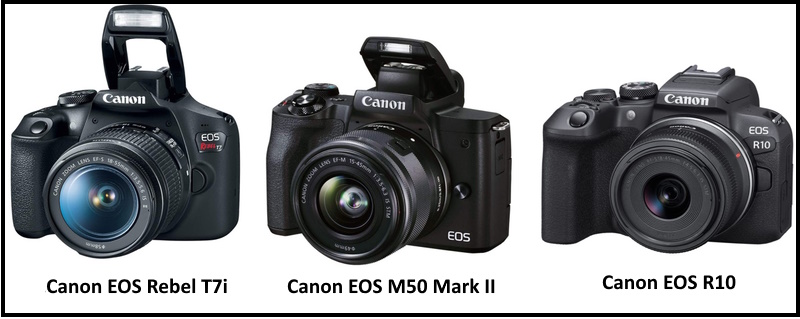


Photo by I Gede Karsa
For Intermediate photographers:
For photographers who have some experience, a mid-range DSLR or mirrorless camera is a good choice. These cameras offer more advanced features, such as better autofocus and higher resolution. Some good options include:
This is a mid-range DSLR camera with a 32.5-megapixel APS-C sensor. It has a fast and accurate autofocus system with 45 cross-type autofocus points, making it great for capturing sharp images of moving subjects. It also has a fast continuous shooting speed of up to 10 frames per second, allowing you to capture the perfect moment during a wedding event.
The EOS 90D also has excellent low-light performance, thanks to its ISO range of 100-25600 (expandable to 51200). It is also compatible with a wide range of lenses, making it a versatile option for wedding photography.
The Canon EOS 90D is a popular DSLR camera that offers many features for photographers. Here are some of the pros and cons of the Canon EOS 90D:
Pros:
- High-resolution sensor: The 32.5-megapixel APS-C sensor of the Canon EOS 90D produces detailed and sharp images.
- Fast and accurate autofocus: The camera has a Dual Pixel CMOS AF system that can focus quickly and accurately, making it ideal for action photography.
- Good image stabilization: The 90D features in-body image stabilization that can help to minimize camera shake and produce sharper images.
- Excellent battery life: The camera can shoot up to 1,300 shots per charge, which is significantly better than many other DSLRs in its class.
- Vari-angle touch screen: The camera’s 3-inch LCD screen can be tilted and swiveled, making it easy to compose shots from different angles.
- Dual memory card slots: The 90D has two memory card slots, which can be useful for photographers who need to shoot a large number of images or videos.
Cons:
- No 4K video at 60fps: While the camera can shoot 4K video, it is limited to 30fps, which may not be sufficient for some videographers.
- No headphone jack: The 90D does not have a headphone jack, which can make it difficult to monitor audio while shooting video.
- Heavy and bulky: The camera is relatively heavy and bulky, which may make it less portable than some other DSLRs.
- Limited ISO range: The 90D’s ISO range is limited to 100-25600, which may not be sufficient for shooting in very low light conditions.
- No built-in Wi-Fi: The camera does not have built-in Wi-Fi, which can make it more difficult to transfer images wirelessly.
- No built-in flash: The 90D does not have a built-in flash, which can be an inconvenience for photographers who need to shoot in low-light conditions.
The Canon EOS R50 is a compact mirrorless camera designed to appeal to users looking for something more than a smartphone1. It’s based around a 24-megapixel sensor and Canon’s latest ‘RF’ lens mount1. Some of its key features are:
- Dual Pixel CMOS Auto Focus II coupled with the powerful DIGIC X processor delivers swift subject detection and tracking2.
- Burst shooting at up to 15fps in full e-shutter mode (12 in an electronic first curtain)1.
- 4K video up to 30p with no crop and 10-bit HDR video and HEIF images1.
- 36M dot OLED viewfinder and 1.62M dot fully articulating touchscreen1.
- The EOS R50 is very light and compact, weighing about 375g with a battery and a card inside3. It also has a focus bracketing mode, a handheld night scene mode, and an AF mode designed for vlogging.
The Canon EOS R50 is a new compact mirrorless camera that uses Canon’s RF lens mount and has a 24.2MP APS-C sensor with Dual Pixel AF II. It can shoot up to 15fps with an electronic shutter and record 4K video at 30p with no crop. It also has a fully articulating touchscreen and an OLED viewfinder.
Some possible pros and cons of the Canon EOS R50 are:
Pros:
- Lightweight and portable design
- Fast and accurate autofocus system with subject recognition modes
- High-speed continuous shooting and 4K video with oversampling from 6K
- Vlogging mode for easy self-filming
- Compatible with a range of RF lenses
Cons:
- Limited battery life (around 250 shots per charge)
- No in-body image stabilization
- Small buffer size (around 40 JPEGs or 20 RAWs)
- No headphone jack or external microphone input
- No weather sealing
This is a mirrorless camera with a 30.3-megapixel full-frame sensor. It has an advanced autofocus system with 5655 autofocus points and a fast continuous shooting speed of up to 8 frames per second. The EOS R also has excellent low-light performance, thanks to its ISO range of 100-40000 (expandable to 102400).
One of the key advantages of the EOS R is its electronic viewfinder, which provides a real-time preview of the exposure and white balance settings. This can be very useful for wedding photography, as it allows you to see how the final image will look before you take the shot. The EOS R is also compatible with Canon’s RF mount lenses, which offer excellent optical performance and image stabilization.
Pros:
- Incredible autofocus performance
- Excellent electronic viewfinder
- Good image quality
- Solid build
- Customization options
Cons:
- Single card slot
- Cumbersome LCD
- Subpar ergonomics
- 8x crop for 4K video
- Laggy interface
Below is a comparison table of the above-mentioned cameras.

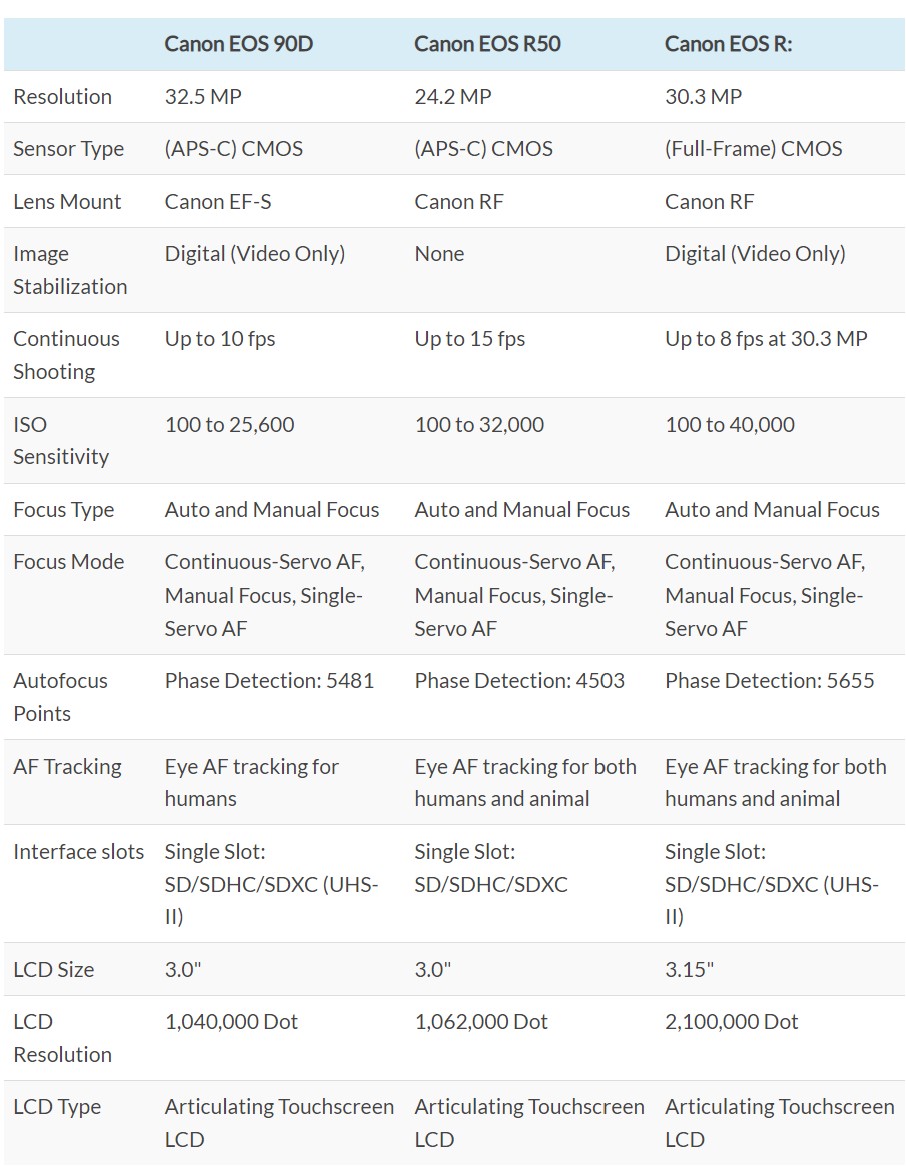

Photo by Trung Nguyen
For Advanced photographers:
For advanced photographers, a professional-grade DSLR or mirrorless camera is ideal. These cameras offer the best image quality, fast autofocus, and advanced features for shooting in challenging lighting conditions. Some good options include the Canon:
The Canon EOS 5D Mark IV is a full-frame DSLR camera that offers high image quality, fast autofocus, and excellent low-light performance. It features a 30.4-megapixel sensor, Dual Pixel CMOS AF, and a maximum ISO of 32,000, making it well-suited for capturing stunning wedding photos in a variety of lighting conditions.
It also has a 61-point AF system, which allows for precise focusing, and it can shoot at up to 7 frames per second.
Pros:
- High resolution: The Canon EOS 5D Mark IV has a 30.4-megapixel full-frame sensor, which produces highly detailed and sharp images.
- Advanced autofocus: The camera features a 61-point autofocus system with advanced tracking capabilities, making it ideal for capturing fast-moving subjects.
- Excellent low-light performance: The camera has a native ISO range of 100-32000, which can be expanded up to 50-102400, making it suitable for low-light photography.
- Dual Pixel CMOS AF: The camera features Canon’s Dual Pixel CMOS AF technology, which provides fast and accurate autofocus during Live View and video shooting.
- 4K video capability: The camera can shoot 4K video at 30fps and Full HD video at 60fps, making it suitable for videographers.
- Touchscreen LCD: The camera has a 3.2-inch touchscreen LCD that can be used for focusing and adjusting settings.
- Weather sealing: The camera is weather-sealed, making it resistant to dust and moisture, and suitable for outdoor photography.
Cons
- Expensive: The Canon EOS 5D Mark IV is a professional-grade camera and comes with a high price tag, making it less accessible to amateur photographers.
- Heavy and bulky: The camera is relatively heavy and bulky, making it less portable than smaller cameras.
- Limited dynamic range: The camera’s dynamic range is not as good as some of its competitors, making it less suitable for high-contrast scenes.
- Limited tilt and swivel: The camera’s LCD screen can tilt up and down, but it cannot be rotated, making it less suitable for shooting at different angles.
- Limited battery life: The camera’s battery life is relatively short, especially when shooting video, which can be a drawback for photographers who need to shoot for extended periods.
The Canon EOS R6 is a full-frame mirrorless camera that offers high-speed performance and excellent image quality. It features a 20.1-megapixel sensor, Dual Pixel CMOS AF, and a maximum ISO of 102,400, making it ideal for shooting in low-light conditions.
It also has a 6,072-point AF system, which allows for fast and accurate autofocus, and it can shoot up to 12 frames per second. The EOS R6 also features in-body image stabilization, which can be helpful for capturing sharp images in low-light conditions or when shooting handheld.
Here is a list of some pros and cons of the Canon EOS R6
Pros:
- Outstanding 20MP image sensor with excellent low-light performance and dynamic range
- Quick, smart autofocus with subject tracking of people and animals using deep learning technology
- Stabilized full-frame sensor with up to 8 stops of shake correction
- Large, crisp EVF and swing-out touch LCD
- Dual UHS-II SDXC card slots
- Strong 4K video quality with Canon Log or HDR PQ options
- High-speed continuous shooting of up to 12 fps with mechanical shutter and up to 20 fps with electronic shutter
Cons:
- 4K video recording limited by heat and crop factor
- Fewer pixels than most competitors
- Battery life could be better
- Lens system still has room for growth
- Disappointing dynamic range in JPEGs
- Expensive for an enthusiast-level camera
The Canon EOS R5 stands out as the most costly camera in this selection by a considerable margin. Despite the controversial 8K video feature, this camera boasts an array of impressive technologies. For instance, the 45MP full-frame sensor is highly commendable, and the autofocus system is unrivaled in its class. It has the clever ability to track faces even when they are obstructed, making it an invaluable tool for wedding photography.
Additionally, the burst shooting speed of 12fps (20fps with electronic shutter) ensures you never miss a moment. Furthermore, the in-body image stabilization (IBIS) system is noteworthy, as it can compensate for up to 8 stops when paired with an optically-stabilized RF lens. Although pricey, the Canon EOS R5 is undoubtedly worth it.
Pros:
- Superb 45MP full-frame sensor with excellent detail and dynamic range
- Fast, accurate autofocus with subject tracking of people and animals using deep learning technology
- Stabilized full-frame sensor with up to 8 stops of shake correction
- Big, brilliant EVF and swing-out touch LCD
- CFexpress and UHS-II SDXC card slots
- 8K and 4K video look great with Canon Log or HDR PQ options
Cons:
- The video record time is limited by heat and crop factor
- Expensive CFexpress memory is required for some features
- Battery life could be better
- The lens system still has some room to grow
- Priced higher than competitors
Below is a comparison table of the above-mentioned cameras.

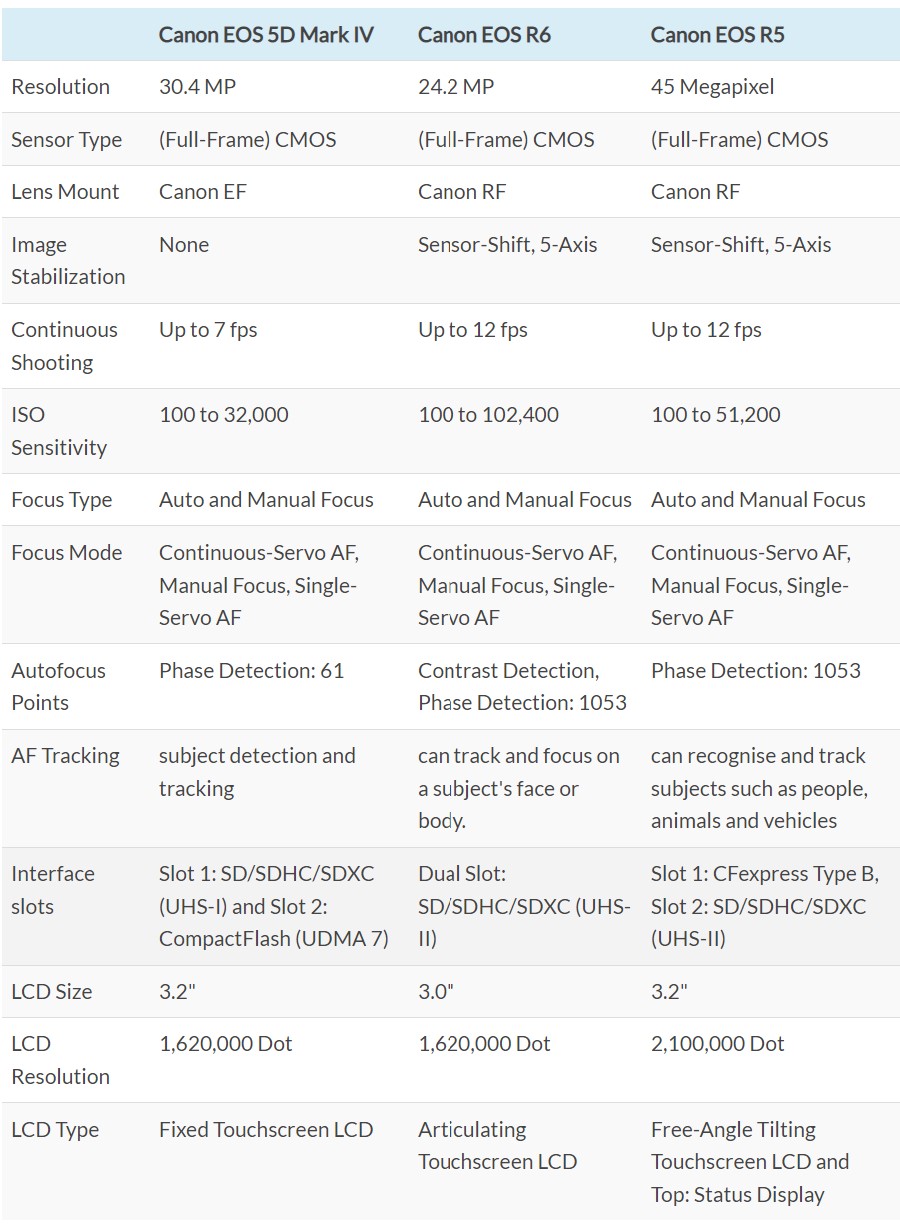
Related posts
Wedding Portrait Photography Tips – 10 Essential Advice
Best Canon Lenses For Wedding Photography – You Should Own At Least Two!
Lake Tahoe Wedding Checklist: Planning Your Big Day At A Dream Location
Thanks for reading, I hope you enjoyed the article, in case you have any questions just drop them below & I will be happy to answer you.
The featured Photo by Jonathan Borba
If you enjoy the site, don’t forget to subscribe, we will only inform you when a new article is posted.

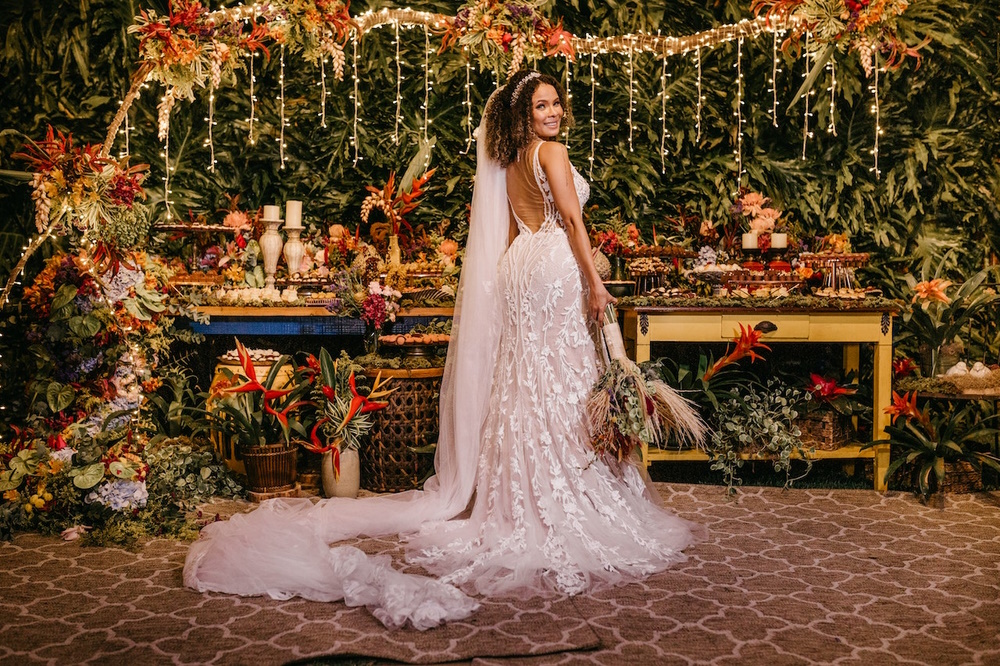


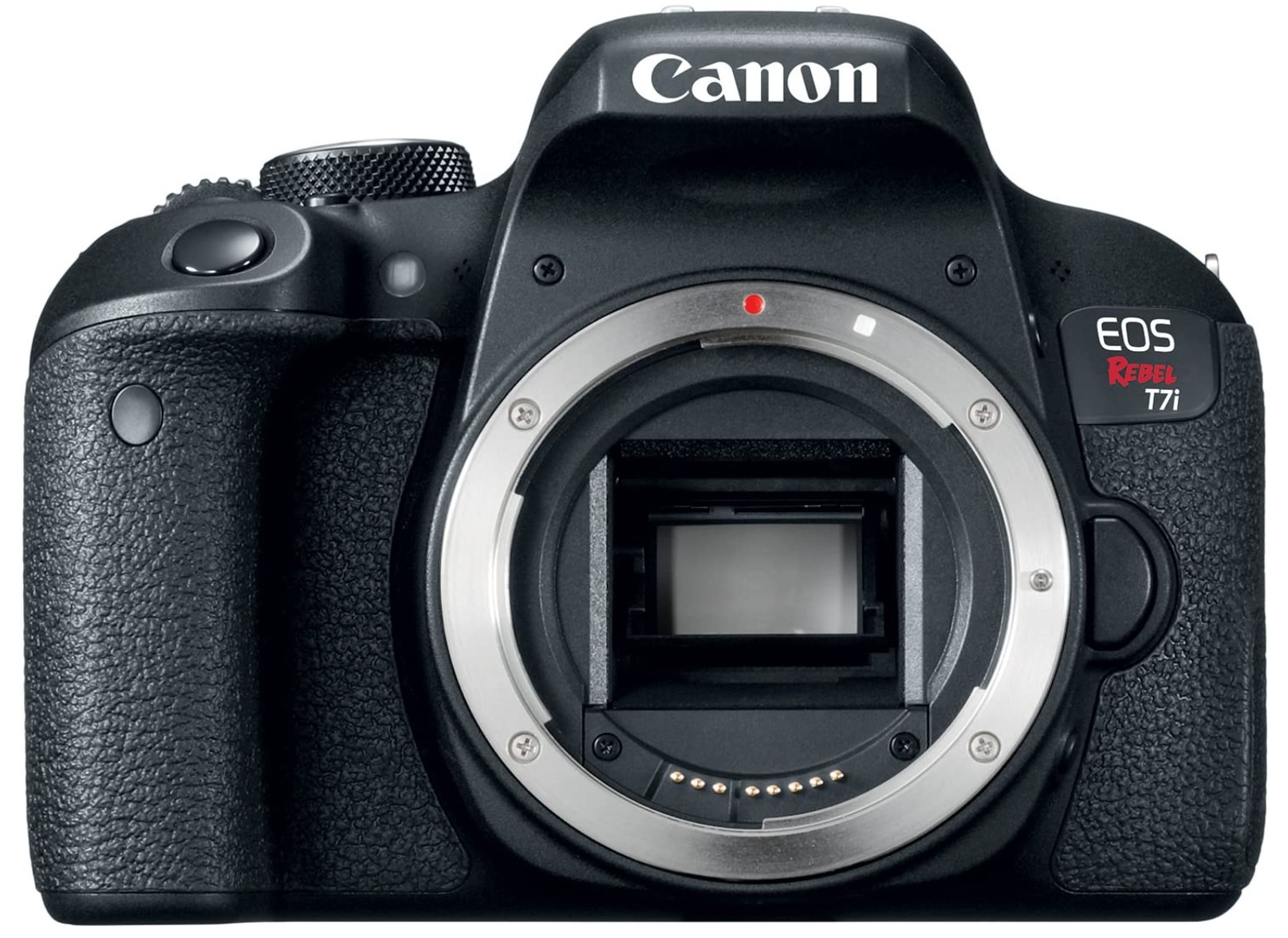




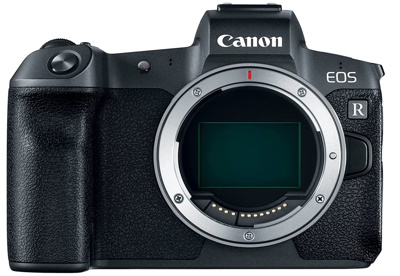
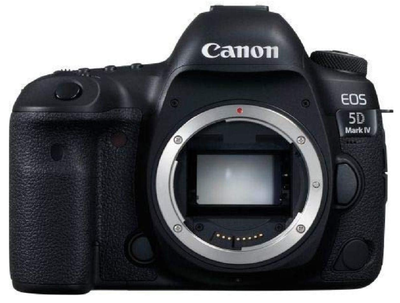
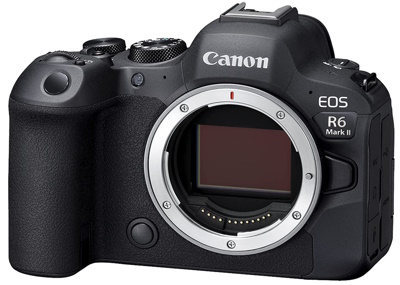
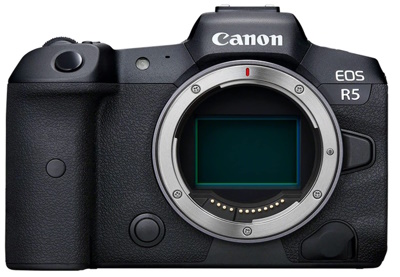



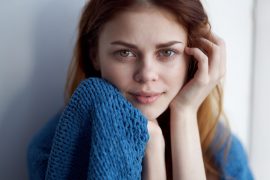
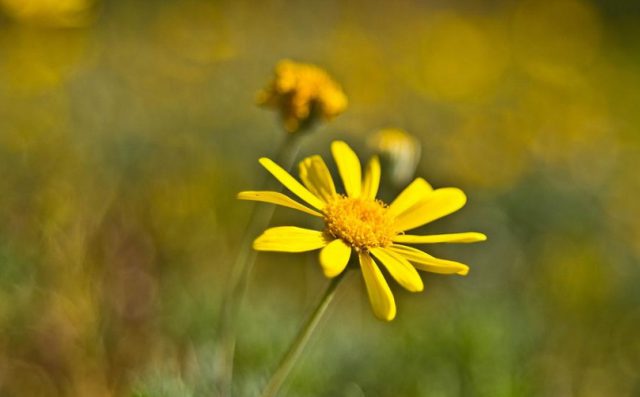
Hi there Amin, I appreciate the thoroughness with which you’ve presented each camera model’s features and benefits, outlining their strengths and limitations. Your comparison chart is especially helpful for quickly and easily comparing the cameras side-by-side.
I did have a question about your recommendation of the Canon EOS R as the best overall camera for wedding photography. You mentioned that its low-light performance is exceptional, but are there any potential drawbacks or limitations that should be considered before making the investment? Thank you.
Thank you for your kind words, I’m glad you found the comparison chart helpful!
Regarding your question about the Canon EOS R, while it is an excellent camera for low-light photography, there are a few limitations to consider.
One consideration is the battery life, which may not last as long as some other cameras in its class, particularly if you use the electronic viewfinder extensively. However, this can be mitigated by carrying spare batteries or using the camera’s power-saving settings.
Another limitation is the single card slot, which may be a concern for some wedding photographers who prefer to shoot with dual card slots for added redundancy and backup. However, the EOS R does have the option to back up images to a computer or mobile device via Wi-Fi, which can provide an additional layer of backup.
Thanks again for your feedback.
Hey there, Ehab!
I just stumbled upon your article about the best Canon cameras for wedding photography, and I’ve got to say, it was a real eye-opener for a beginner hobbyist like myself! I’ve always loved taking photos at my friends’ and family’s weddings, but never really knew which camera to invest in to up my game. Your in-depth analysis of the different Canon models and their features has given me a much clearer idea of what I should be looking for in a camera.
I’m curious about your thoughts on investing in a high-quality lens. Do you think it’s more important for a beginner like myself to focus on the camera body, or should I also be considering lenses? I’d also love to hear about your own experiences with the cameras you mentioned in the article. Have you personally used all of them, or do you have a favorite that you tend to gravitate towards? Your firsthand experience would be invaluable for someone like me who’s just getting started in the world of wedding photography.
I’m glad to hear that my article on the best Canon cameras for wedding photography was helpful to you! As for your question about investing in a high-quality lens, I would definitely recommend considering lenses as well. In fact, many professional photographers would argue that lenses are even more important than the camera body when it comes to producing high-quality images.
A good lens can make a big difference in the sharpness, contrast, and overall look of your photos. When it comes to wedding photography, having a fast lens with a wide aperture (such as f/1.8 or f/1.4) can be particularly beneficial, as it allows you to create beautiful bokeh and capture low-light situations without having to rely on flash.
I can say that the Canon 5D Mark IV is my best for wedding photography, with excellent autofocus systems, high-resolution sensors, and fast burst rates.
I hope this information is helpful to you as you continue to explore wedding photography! Don’t hesitate to reach out if you have any further questions or if there’s anything else I can help you with.